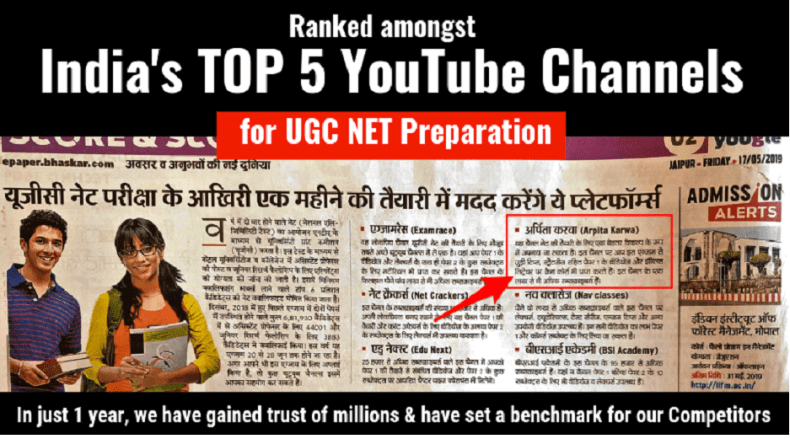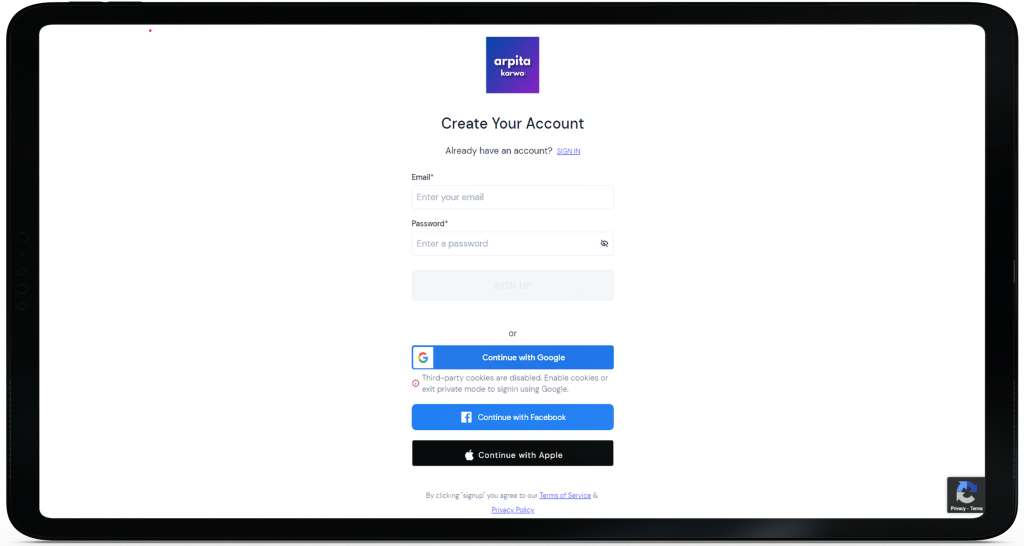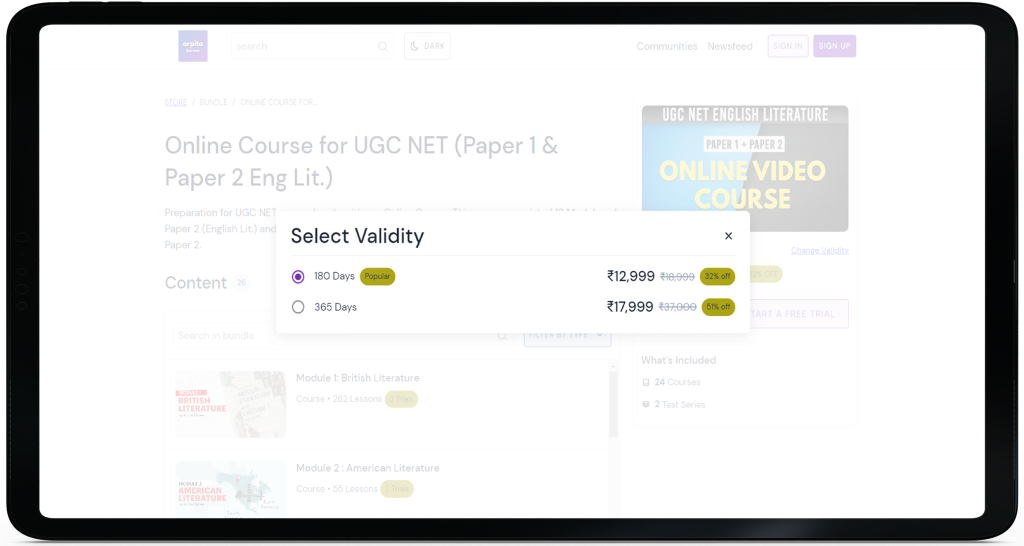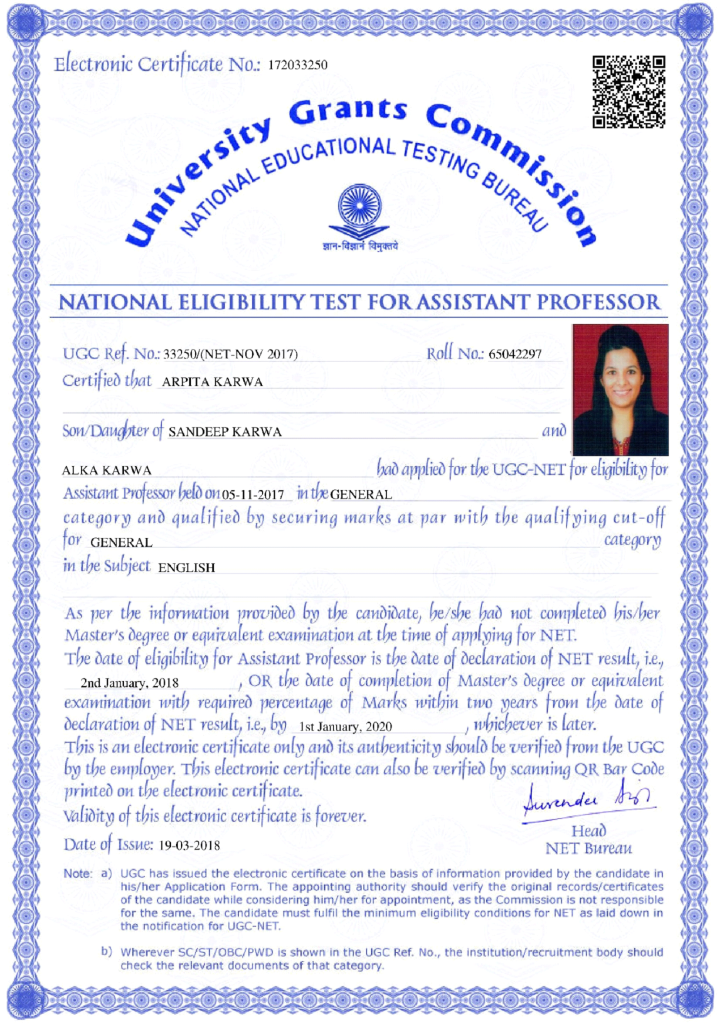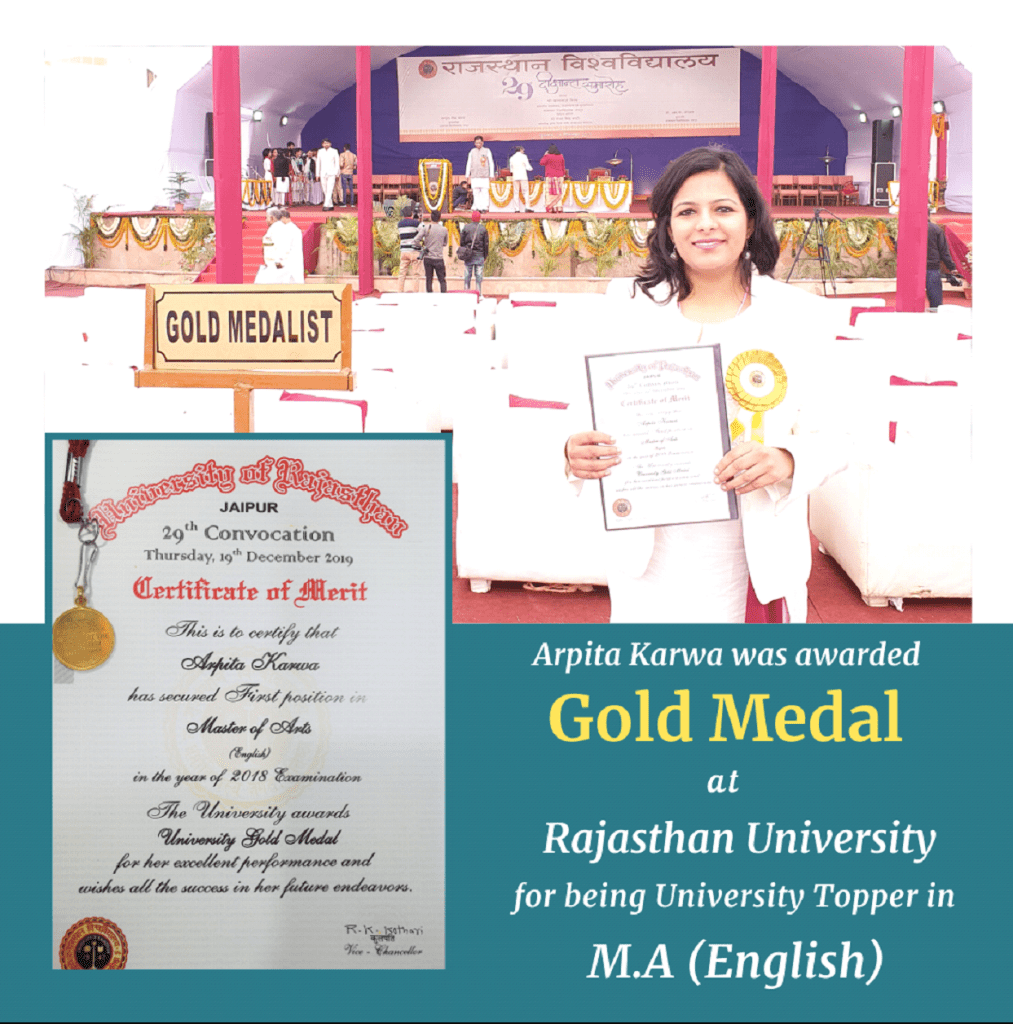UGC NET Paper 1 September 2020 (Conducted on 24th Sep 2020 : Morning Shift)
October 18, 2022 2025-08-18 13:36UGC NET Paper 1 September 2020 (Conducted on 24th Sep 2020 : Morning Shift)
September 2020: Paper 1 (Conducted on 24th Sep 2020 : Morning Shift)
Q.1) Which of the following Entries of the Indian Constitution deals with coordination and determination of standards in institutions for higher education or research or scientific and technical institutions?
[1] Entry 63
[2] Entry 64
[3] Entry 65
[4] Entry 66
Correct Answer: 4
Q.2) Statement I: Paravidya means knowledge that transcends human experience
Statement II: Aparavidya means knowledge based on the human experience
[1] Both Statement I and Statement Il are true
[2] Both Statement I and Statement Il are false
[3] Statement I is true but Statement Il is false
[4] Statement I is false but Statement Il is true
Correct Answer: 1
Q.3) Match the column:
A. Stage I – Value collection
B. Stage II – Value assessment
C. Stage III – Value clarification
D. Stage IV – Value consolidation
I. Choosing and imbibing the values one cherishes
II. Observing and imitating the adult behaviours, particularly parents
III. Predictability of human behaviour is assured
IV. Finding out gaps in values preached and practice
[1] A-I B-IV C-III D-II
[2] A-IV B-III C-II D-I
[3] A-II B-I C-IV D-III
[4] A-III B-II C-I D-IV
Correct Answer: 3
Q.4) Asynchronous communication takes place through which of the following technologies?
A. Teleconferencing
B. Virtual classroom
C. Video chat
D. Blogs
E. Discussion boards
F. Vlog
[1] ABC
[2] BCD
[3] DEF
[4] CDE
Correct Answer: 3
Q.5) The first open university in India was established in the year-
[1] 1980
[2] 1982
[3] 1985
[4] 1986
Correct Answer: 2
Q.6) Assertion A: Despite increasing vulnerability to natural disasters many communities resist adopting mitigation programmes and measures
Reason R: Mitigation is often perceived by communities as being incompatible with their cultural practices
[1] Both A and R are correct and R is the correct explanation of A
[2] Both A and R are correct but R is NOT the correct explanation of A
[3] A is correct but R is not correct
[4] A is not correct but R is correct
Correct Answer: 3
Q.7) Match the column:
A. Oxygen demanding wastes
B. Plant nutrients
C. Acids
D. Polychlorinated biphenyls (PCBs)
I. Mine drainage
II. Modern washing powders and agriculture run-off
III. Waste incineration and toxic dumps
IV. Paper mills and food processing units
[1] A-IV B-III C-II D-I
[2] A-IV B-I C-III D-II
[3] A-IV B-II C-I D-III
[4] A-IV B-III C-I D-II
Correct Answer: 3
Q.8) The global emissions (by weight) of following primary pollutants from natural sources are maximum in the case of
[1] Nitric oxide
[2] Carbon monoxide
[3] Methane
[4] Carbon dioxide
Correct Answer: 4
Q.9) Millennium Development Goals of Global Partnership for Development envisaged making available the benefits of new technologies – especially which of the following?
[1] Information and Communication
[2] Artificial Intelligence
[3] Nuclear technology
[4] Solid waste treatment technology
Correct Answer: 1
Q.10) Identify the correct sequence of continents in decreasing order of their yearly carbon dioxide emissions, at present
A. Africa
B. Asia
C. Europe
D. North America
[1] B,D,A,C
[2] B,D,C,A
[3] D,B,C,A
[4] D,C,B,A
Correct Answer: 2
Q.11) Python is a/an-
A. Programming language
B. Operating system
C. Search engine
D. Snake
[1] B
[2] A
[3] BC
[4] CD
Correct Answer: 2
Q.12) Assertion A: E-commerce companies require personal data to serve the stakeholders better
Reason R: In this process, privacy may get compromised
[1] Both A and R are correct and R is the correct explanation of A
[2] Both A and R are correct but R is NOT the correct explanation of A
[3] A is correct but R is not correct
[4] A is not correct but R is correct
Correct Answer: 1
Q.13) Information and Communication Technology (ICT) comprises of
A. Online learning
B. Learning through Mobile Application
C. Web based learning
D. All the above
[1] AB
[2] AC
[3] D
[4] A
Correct Answer: 3
Q.14) Multimedia comprises of
[1] Text and Audio
[2] Video and Audio
[3] Video only
[4] Text, Audio and Video
Correct Answer: 4
Q.15) What is the full form of the abbreviation CD.ROM?
[1] Count Disk Random Only Memory
[2] Compact Disk Run Only Memory
[3] Compact Disk Read Only Memory
[4] Count Disk Raw Only Memory
Correct Answer: 3
Q.16-20)
Q.16) In which year(s) the production of potato is less than that of average production?
A. 2016
B. 2014
C. 2015
D. 2017
[1] AB
[2] ABD
[3] C
[4] CD
Correct Answer: 2
Q.17) In which year(s) is the production of tomato the least?
[1] 2014
[2] 2017
[3] 2019
[4] 2016
Correct Answer: 4
Explanation:
The least production is 40 tonnes in the year 2016.
Q.18) What is the gross production of vegetables in the year 2018?
[1] 1270
[2] 1275
[3] 1260
[4] 1280
Correct Answer: 1
Q.19) What is the increase (in percentage) of the total production of vegetable from the year 2018 to 2019?
[1] 15.7%
[2] 16.1%
[3] 19.4%
[4] 17.2%
Correct Answer: 4
Q.20) In which year the productivity of vegetable is maximum?
[1] 2018
[2] 2016
[3] 2019
[4] 2017
Correct Answer: 3
Q.21) What is the nature of a logical argument? Choose the correct answer from the following:
[1] Justified or unjustified
[2] True or false
[3] Valid or invalid
[4] Verifiable or not verifiable
Correct Answer: 3
Q.22) Which of the following are accepted in Buddhism?
A. Adhyasa
B. Apoha
C. Abhava
D. Arthapatti
E. Pratyaksha
F. Sabda
[1] A and B
[2] C and D
[3] B and E
[4] E and F
Correct Answer: 3
Q.23) Which of the following pramanas are accepted by Vaisheshika philosophy?
A. Pratyaksha
B. Anumana
C. Sabda
D. Upamana
E. Arthapatti
F. Anupalabdhi
[1] AB
[2] CD
[3] EF
[4] CE
Correct Answer: 1
Q.24) ‘Mahatma Gandhi is called father of Nation’.
What kind of classical categorical proposition is it?
[1] Universal affirmative
[2] Particular affirmative
[3] Both 1 and 2
[4] Neither 1 nor 2
Correct Answer: 1
Q.25) Given below are two propositions:
All philosophers are fallible
Socrates is not fallible
In the classical square of opposition, which one of the following is the correct answer?
[1] Contrary
[2] Contradictory
[3] Subalternation
[4] Subcontrary
Correct Answer: 2
Q.26) Consider the following letter series. What is next of : acf, egj, ikn, oqt,
[1] suy
[2] uvy
[3] rwz
[4] uwz
Correct Answer: 4
Q.27) A household Incurs a certain expenditure on the consumption of a commodity in a given month. If the price of the commodity is decreased by 20% and its consumption is increased by 20%, what will be the net percent increase or decrease in the expenditure of the household?
[1] 2%
[2] 4%
[3] 8%
[4] 10%
Correct Answer: 2
Q.28) Consider the following number series 2, 10, 30, 68, X
What is the term X?
[1] 130
[2] 92
[3] 88
[4] 76
Correct Answer: 1
Q.29) The volume of a cube of side 10.0 cm is changed by increasing its sides by 1.0%. The percentage increase in the volume of the cube is
[1] ~1%
[2] ~6%
[3] ~3%
[4] ~10%
Correct Answer: 3
Q.30) A man walks at a speed of 3 km/hour from location A towards east for 1 hour and then turning left walks at a speed of 1.5 km/hour for 6 hours towards north to a location B. The shortest distance between locations A and B is
[1] 10 km
[2] 12km
[3] ~8.54 km
[4] ~9.48 km
Correct Answer: 4
Q.31) When communication for educational purpose takes place, the sequence of elements is-
A. Source
B. Encoder
C. Message
D. Decoder
E. Feedback
[1] ABCDE
[2] BCDEA
[3] CDEAB
[4] DEBAC
Correct Answer: 1
Q.32) Match the column:
A. Physical
B. psychological
C. Language
D. Cultural
I. Different understanding
II. Stereotypes
III. Pre-disposed notions
IV. Inaudible voice
[1] A-IV B-III C-I D-II
[2] A-III B-II C-IV D-I
[3] A-II B-I C-III D-IV
[4] A-I B-II C-III D-IV
Correct Answer: 1
Q.33) Assertion A: In group discussions, some participants enter the fray with big chips on their shoulders
Reason R: These are antagonistic people who are calm and listed
[1] Both A and R are correct and R is the correct explanation of A
[2] Both A and R are correct but R is NOT the correct explanation of A
[3] A is correct but R is not correct
[4] A is not correct but R is correct
Correct Answer: 3
Q.34) A teacher who encourages students’ participation in communication will ensure
A. Opposite views
B. Self-esteem
C. Class performance
D. Professional development
E. Binary distractions
[1] ABC
[2] ACE
[3] BCD
[4] ADE
Correct Answer: 3
Q.35) In communication process, when the sender and the receiver interchange their roles in respect of sending and receiving the message, it is called
[1] Universal model
[2] Transactional model
[3] Singular-flow model
[4] Pluralistic model B
Correct Answer: 2
Q. 36-40)
Read RC Passage to Answer:
More generally, today’s business-to-business marketers are using a wide range of digital and social marketing approaches from websites, blogs, and smartphone apps to mainstream social networks such as Facebook, LinkedIn, YouTube, and Twitter to reach business customers and manage customer relationships anywhere, anytime. Digital and social marketing has rapidly become the new space for engaging business customers. Business-to-business e-procurement yields many benefits. First, it shaves transaction costs and results in more efficient purchasing for both buyers and suppliers. E-procurement reduces the time between order and delivery. A Web-powered purchasing program eliminates the paperwork associated with traditional requisition and ordering procedures and helps an organization keep better track of all purchases. Finally, beyond the cost and time savings, e-procurement frees purchasing people from a lot of drudgery and paperwork. In turn, it frees them to focus on more strategic issues, such as finding better supply sources and working with suppliers to reduce costs and develop new products.
The rapidly expanding use of e-procurement, however, also presents some problems. For example, at the same time that the Internet makes it possible for suppliers and customers to share business data and even collaborate on product design, it can also erode decades-old customer-supplier relationships. Many buyers now use the power of the Internet to pit suppliers against one another and search out better deals, products, and turnaround times on a purchase-by-purchase basis.
E-procurement can also create potential security concerns. Although home shopping transactions can be protected through basic encryption, the secure environment that businesses need to carry out confidential interactions is sometimes still lacking.
Q.36) What is the current strategy of business to business managers?
[1] Searching for new business space
[2] Exploring new customer relations
[3] Less dependence on social marketing
[4] More and more use of digital business
Correct Answer: 4
Q.37) The benefits of e-procurement are-
A. Cost reduction
B. Quick delivery
C. Longer time for strategic procurement
D. Empathetic purchase
[1] A and B only
[2] B and C only
[3] C and D only
[4] A and D only
Correct Answer: 1
Q.38) What can be a strategic issue as a result of less paperwork?
[1] Transaction analysis
[2] More investment for supply
[3] Development of new products
[4] Importance to traditional customer relation
Correct Answer: 3
Q.39) What can be the main issue with e-procurement vis-a-vis power of Internet?
[1] Different purchases for both buyers and suppliers
[2] Sharing business data with customers
[3] Competitive supply of products
[4] Better purchase deals
Correct Answer: 3
Q.40) The focus of the passage is on-
[1] The power of suppliers
[2] Basic business data encryption
[3] The supply side of business
[4] The critical features of e-procurement
Correct Answer: 4
Q.41) The personalistic styles of writing a research report are permissible in which of the following research?
A. Grounded theory research
B. Experimental research
C. Participant-observation based research
D. Historical research
E. Case study research
[1] ABC
[2] BCD
[3] CDE
[4] ACE
Correct Answer: 4
Q.42) Which of the following steps in research are least vulnerable to research ethics?
A. Identifying the research variables
B. Defining the research variables
C. Data collection procedure
D. Data analysis procedure
E. Reporting research outcomes
[1] AB
[2] BC
[3] CD
[4] DE
Correct Answer: 1
Q.43) A college teacher plans a research programme in which he/she intends to improve the socio- emotional aspect of his/her classroom climate during teaching. Which one of the following research methods will be considered appropriate in this context?
[1] Experimental method
[2] Descriptive method
[3] Historical method
[4] Action research method
Correct Answer: 4
Q.44) Which one of the following research procedures will figure under post positivistic approach?
[1] Normative survey
[2] Experimental study
[3] Ethnographic study
[4] Ex post facto study
Correct Answer:3
Q.45) In using the hypothetico-deductive research paradigm which of the following sequences is considered appropriate?
[1] Hypothesis making, Hypothesis testing, Arriving at generalization and Conclusion
[2] Establishing a research problem, Hypothesis making, Hypothesis testing, Arriving at generalization and Conclusion
[3] Hypothesis making, Establishing a research problem, Hypothesis testing, Arriving at generalization and Conclusion
[4] Hypothesis testing, Hypothesis making, Finalizing the research problem, Arriving at generalization and Conclusion
Correct Answer: 2
Q.46) Match the column:
A. Formative Evaluation
B. Summative Evaluation
C. Criterion-referenced test
D. Norm-referenced test
I. Percentile rank and standard scores are used for reporting
II. Standards indicative of mastery
III. The intention of using it is to identify scope and potential for improvement
IV. Its intention is to judge learning standards
[1] A-III B-IV C-II D-I
[2] A-I B-II C-III D-IV
[3] A-II B-I C-IV D-III
[4] A-IV B-III C-I D-II
Correct Answer: 1
Q.47) From the following list of methods of teaching used in institutions of higher learning, identify those which are learner-centred
A. Project work
B. Chalk and talk
C. Lecturing with audio-visual
D. Computer-aided instruction
E. Simulation and role-playing
[1] BCD
[2] DE
[3] ABC
[4] C D E
Correct Answer: 2
Q.48) Which of the following will be called behavioural rather than “attitude and beliefs” related competencies for becoming an effective teacher?
A. Locus of control
B. Communicating
C. Managing and monitoring
D. Teacher enthusiasm
E. Evaluating and providing feedback
[1] A B and C only
[2] B,C and D only
[3] B,C and E only
[4] C,D and E only
Correct Answer: 3
Q.49) During teaching, a teacher’s statements that encourage students to elaborate on an answer, either on their own or that of others will be called,
[1] Structuring
[2] Instructional variety
[3] Engagement in the learning process
[4] Probing
Correct Answer: 4
Q.50) In which level of teaching, the learner gets an opportunity to discriminate at length between positive and negative exemplars of concepts?
[1] Memory level
[2] Understanding level
[3] Reflective level
[4] Autonomous development level
Correct Answer: 2


















